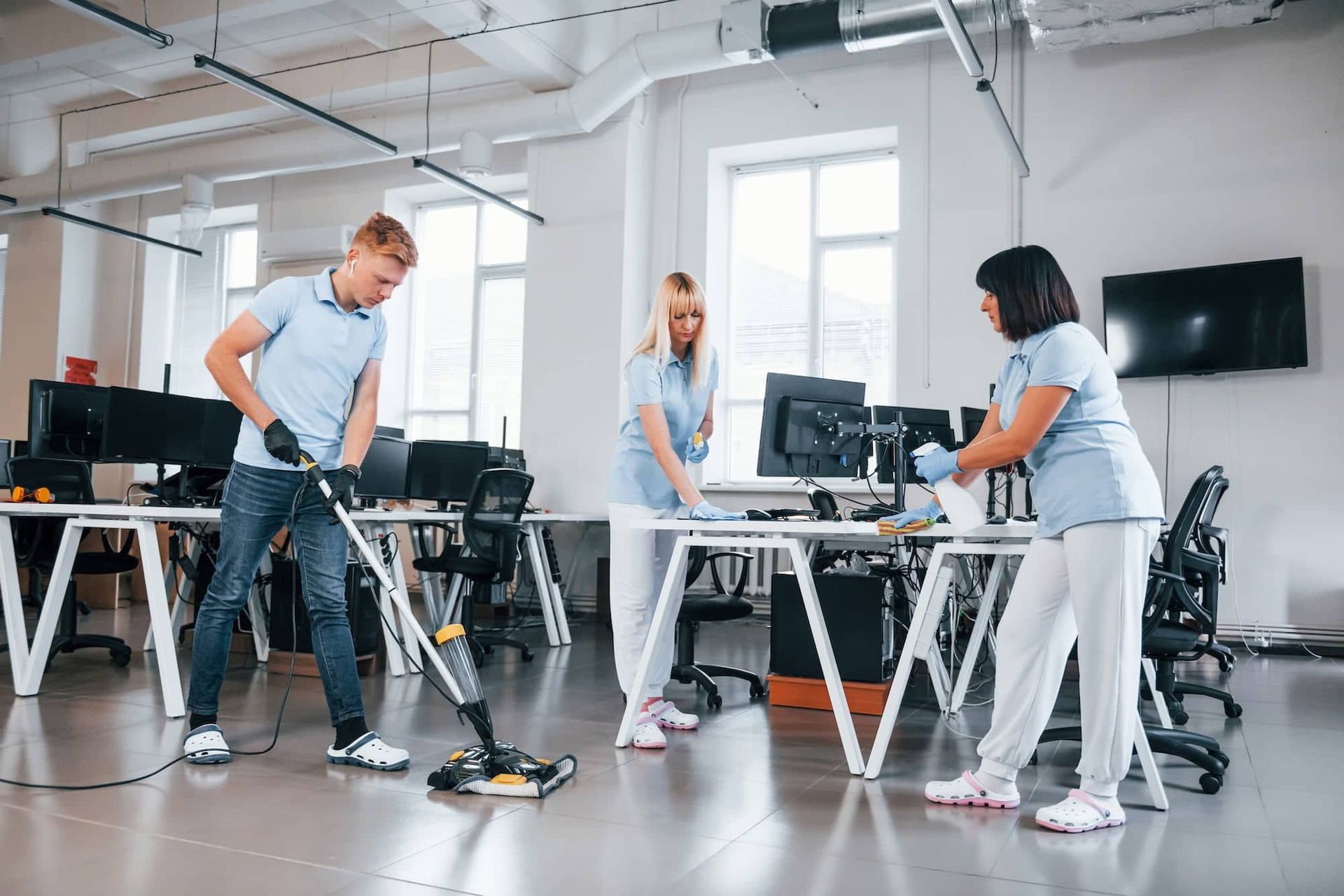How Innovation in Cleaning Services is Changing the Commercial Landscape

Innovation in cleaning services is reshaping how commercial spaces operate. With businesses striving for efficiency and sustainability, the cleaning industry is embracing new technologies and methods that enhance performance. This blog explores the latest advancements in innovative cleaning solutions that not only promise to improve efficiency but also promote environmental sustainability. Let’s dive into how these cutting-edge ideas are transforming commercial spaces, making them cleaner, safer, and more adaptable.
The Rise of Technology in Cleaning
Technology is at the forefront of revolutionizing the cleaning industry. From advanced equipment to smart systems, technology is streamlining cleaning processes. Here are some key technological innovations:
- Automated Cleaning Equipment: Robotic vacuums and scrubbers are gaining popularity in commercial settings. These machines work efficiently, covering large areas without human intervention. They can be programmed to operate during off-hours, reducing disruption to daily operations.
- Smart Sensors: Incorporating smart sensors into cleaning routines allows for real-time monitoring of cleanliness levels. These sensors can detect dirt, spills, and even odors, alerting cleaning staff when and where intervention is needed. This ensures that resources are allocated effectively and that cleaning is performed as needed, rather than on a set schedule.
- Mobile Applications: Many cleaning companies now use mobile apps for scheduling, tracking, and reporting. This technology enhances communication between clients and cleaning staff, making it easier to address concerns and make adjustments in real-time. Clients can also provide feedback directly through these platforms, improving service quality.
Sustainable Cleaning Practices
As environmental concerns continue to rise, the cleaning industry is responding with innovative ideas for cleaning companies that prioritize sustainability. Here are some practices that are gaining traction:
- Green Cleaning Products: The shift towards eco-friendly cleaning supplies is significant. Many companies now use biodegradable, non-toxic cleaning agents that reduce harm to the environment. These products are effective and safe for both cleaning staff and building occupants.
- Water and Energy Conservation: Innovative cleaning companies are investing in equipment that uses less water and energy. For instance, some advanced cleaning machines use technology that allows them to clean more effectively with minimal water usage. This not only saves resources but also reduces operational costs.
- Waste Reduction Strategies: Implementing waste reduction strategies is another critical focus. Cleaning companies are now adopting practices that minimize waste, such as using refillable containers for cleaning solutions and recycling materials wherever possible. This commitment to sustainability not only benefits the environment but also enhances a company's reputation.
Enhanced Training and Development
Innovation in cleaning services also extends to training and development for cleaning staff. Effective training ensures that staff members are knowledgeable about the latest cleaning techniques and technologies. Here are some modern approaches:
- Virtual Reality (VR) Training: Some companies are incorporating VR technology into their training programs. This immersive training method allows employees to practice cleaning techniques in a virtual environment. It’s an engaging way to learn about different scenarios and improve skills without the risks associated with real-life situations.
- Online Learning Modules: With the rise of remote work, many cleaning companies are developing online training modules. These resources provide flexibility for staff to learn at their own pace, covering topics such as safety protocols, equipment usage, and sustainable cleaning practices.
- Regular Refresher Courses: Innovation doesn’t stop at initial training. Many companies are now offering regular refresher courses to keep staff updated on the latest advancements in the industry. This ongoing education fosters a culture of continuous improvement and adaptability.
Focus on Health and Safety
The COVID-19 pandemic has heightened the importance of cleanliness in commercial spaces. Cleaning companies are innovating to ensure health and safety are top priorities:
- Electrostatic Sprayers: These devices are being used to apply disinfectants more effectively. The sprayers charge the cleaning solution, allowing it to cling to surfaces better and reach difficult areas. This technology ensures comprehensive coverage, reducing the risk of germs spreading in shared environments.
- Air Purification Systems: Many commercial spaces are now incorporating advanced air purification systems to improve indoor air quality. These systems can capture and neutralize airborne pathogens, creating a healthier environment for employees and customers alike.
- Personal Protective Equipment (PPE): The use of PPE has become standard practice in the cleaning industry. Companies are investing in high-quality gear to protect their staff while they perform their duties, ensuring a safe working environment.
The Impact on Customer Satisfaction
As cleaning companies embrace innovative cleaning solutions, the impact on customer satisfaction is significant. Here’s how innovation enhances the client experience:
- Transparency and Communication: With the implementation of mobile applications and real-time monitoring systems, clients have greater visibility into the cleaning process. They can track progress, provide feedback, and communicate any specific needs. This transparency builds trust and enhances satisfaction.
- Tailored Services: Innovative cleaning services allow for customization based on client needs. By leveraging technology, cleaning companies can develop personalized cleaning schedules and solutions that fit individual client requirements. This tailored approach ensures that clients receive the best possible service.
- Consistent Quality: With enhanced training and modern equipment, the consistency of cleaning services improves significantly. Clients can expect high standards every time, leading to increased loyalty and repeat business.
Cost-Effectiveness of Innovation
While adopting new technologies and practices may require an initial investment, the long-term cost savings can be substantial. Here’s how innovation can lead to cost-effectiveness:
- Efficiency Gains: Automated equipment and smart cleaning solutions allow for faster, more efficient cleaning processes. This means less labor is needed for the same tasks, reducing overall labor costs.
- Reduced Waste: Sustainable practices lead to reduced waste and lower disposal costs. By using eco-friendly products and recycling, cleaning companies can minimize expenses while also appealing to environmentally conscious clients.
- Long-Term Partnerships: As companies see the value in innovative cleaning solutions, they are more likely to establish long-term partnerships with cleaning service providers. This stability allows cleaning companies to better manage resources and plan for future growth.
Conclusion
Innovation is undeniably transforming the landscape of commercial cleaning services. From the adoption of advanced technology to sustainable practices, the industry is evolving to meet the demands of a changing world. As we continue to prioritize health, safety, and efficiency, cleaning companies that embrace these innovations will not only enhance their service offerings but also contribute to a cleaner, safer environment for all.
At MT Cleaning, we are committed to staying at the forefront of these developments. By integrating innovative ideas for cleaning companies and providing innovative cleaning solutions, we ensure that our clients receive the highest quality service tailored to their needs. For more information about our services or to schedule a consultation, please visit
MT Cleaning or contact us at
406-812-0327.
All Rights Reserved | MT Cleaning
